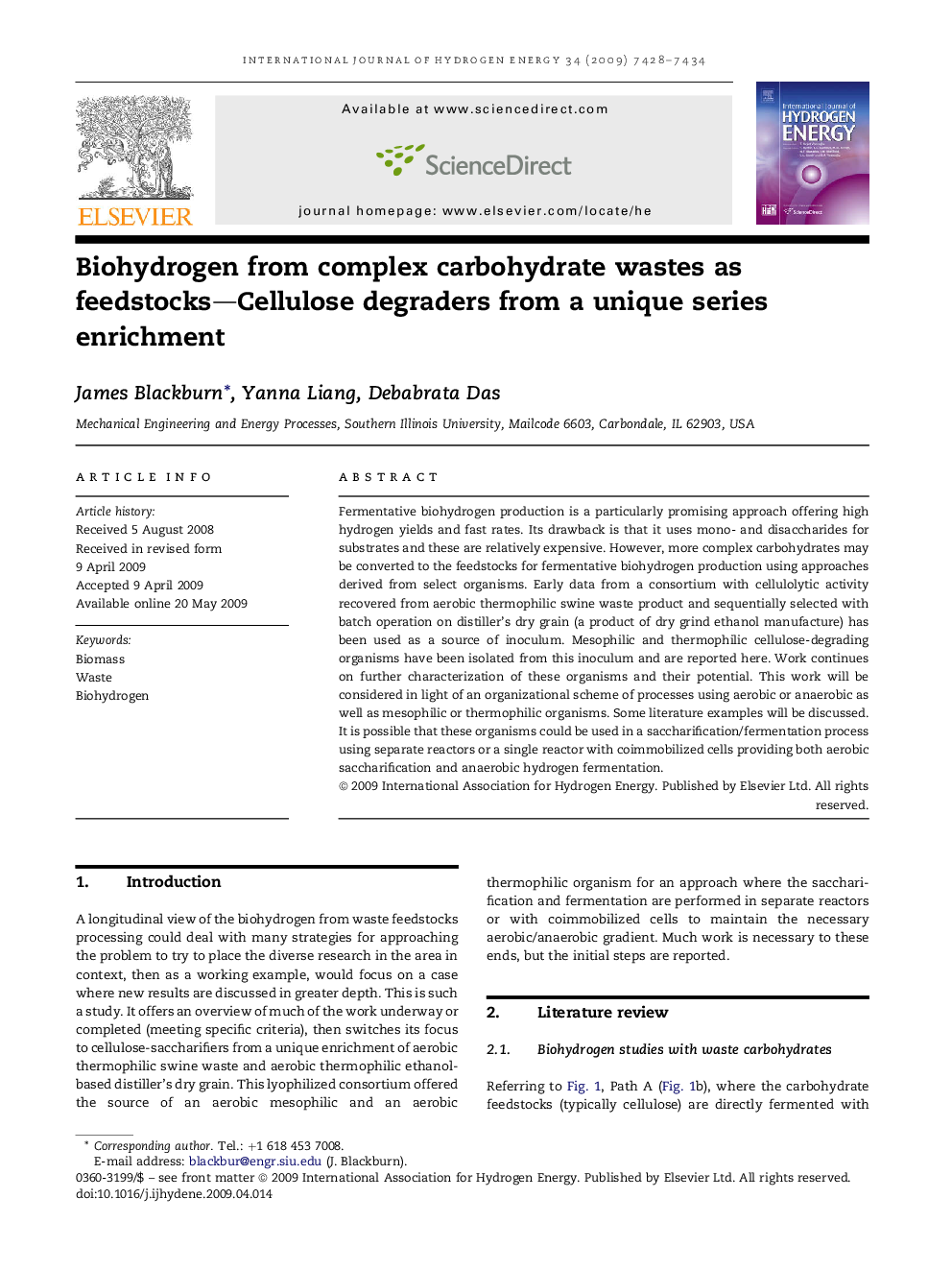| Article ID | Journal | Published Year | Pages | File Type |
|---|---|---|---|---|
| 1281132 | International Journal of Hydrogen Energy | 2009 | 7 Pages |
Fermentative biohydrogen production is a particularly promising approach offering high hydrogen yields and fast rates. Its drawback is that it uses mono- and disaccharides for substrates and these are relatively expensive. However, more complex carbohydrates may be converted to the feedstocks for fermentative biohydrogen production using approaches derived from select organisms. Early data from a consortium with cellulolytic activity recovered from aerobic thermophilic swine waste product and sequentially selected with batch operation on distiller's dry grain (a product of dry grind ethanol manufacture) has been used as a source of inoculum. Mesophilic and thermophilic cellulose-degrading organisms have been isolated from this inoculum and are reported here. Work continues on further characterization of these organisms and their potential. This work will be considered in light of an organizational scheme of processes using aerobic or anaerobic as well as mesophilic or thermophilic organisms. Some literature examples will be discussed. It is possible that these organisms could be used in a saccharification/fermentation process using separate reactors or a single reactor with coimmobilized cells providing both aerobic saccharification and anaerobic hydrogen fermentation.
